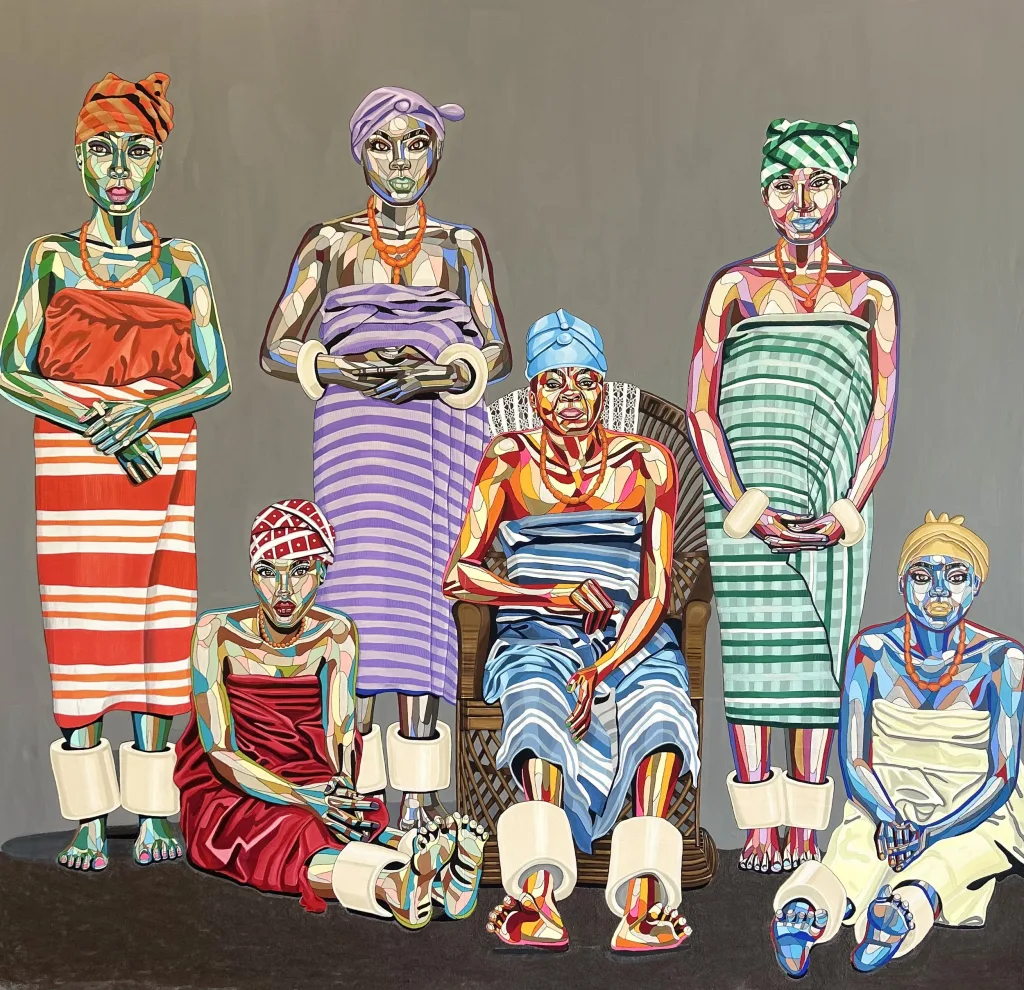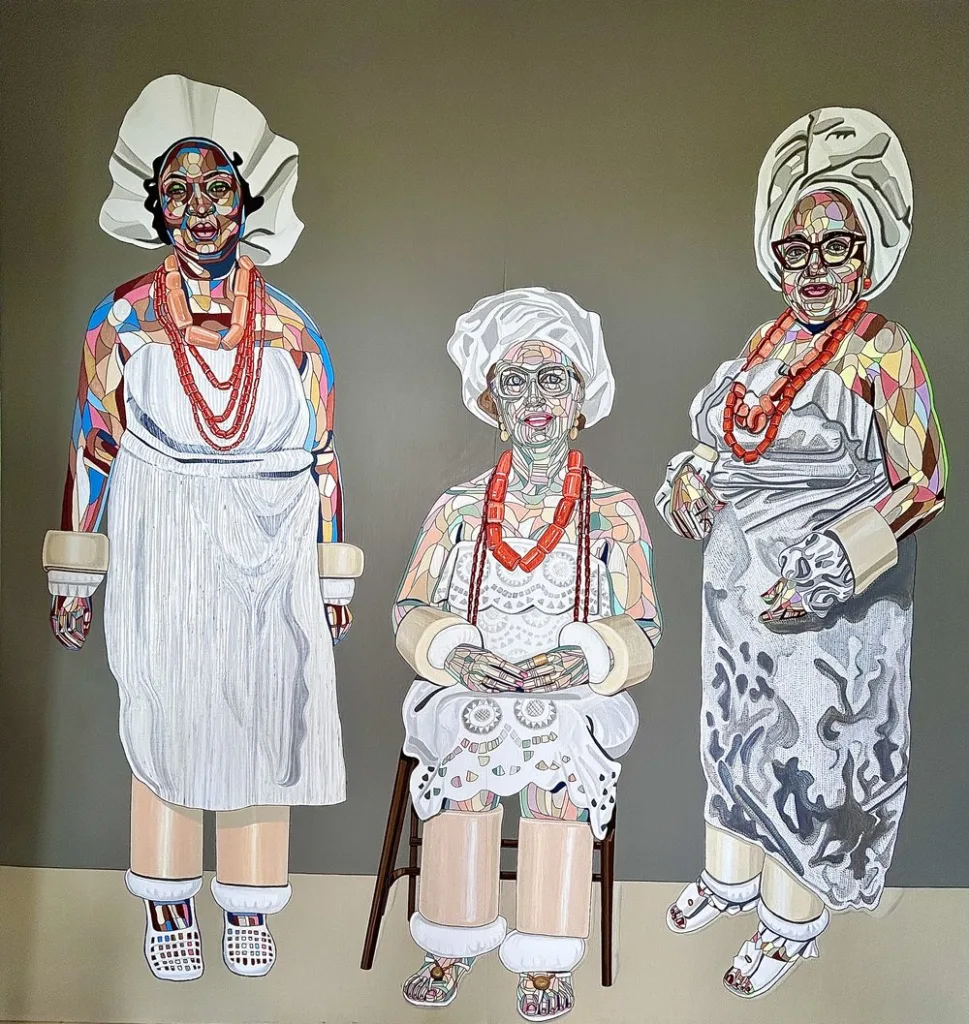Rewa, a Veuve Clicquot Bold Woman Award Finalist, is a visual artist who harnesses her multicultural background and masterfully blends it with modern afropolitan components to create bold, vibrant portraits that celebrate the strength, resilience, and multifaceted identities of women, transcending the boundaries of art, history, and culture.
Her art style combines geometric abstraction, eclectic elements, and mixed techniques. Using line, form, texture, and vibrant colour, she creates visually compelling pieces that convey joy, pride, and community, while highlighting individuality. By seamlessly blending the art practices of fine art and graphic design, Rewa echoes the pioneering spirit of George Braque and Barbara Kruger, narrowing the gap between these two practices.
On display at The Africa Centre from the 8th – 28th of September, her exhibition, Women of the Elephant Tusk: Ndi Otu Odu, is a poignant tribute to the rich cultural tapestry of the Igbo people, specifically Onicha, a vibrant commercial city in southeastern Nigeria. It stands as a testament to Rewa’s unique visual vocabulary, honed through years of artistic exploration.


This stunning series of five large-scale figurative paintings celebrates the Otu Odu society, a socio-political women’s group integral to Onicha’s governance and the preservation of Igbo customs and traditions dating back to the 16th century. Members of the society wear ivory tusk jewelry, symbolizing their identity, status, and strength.
Rewa’s exhibition is a celebration of these women, who embody resilience, wisdom, and power. Inspired by her rich cultural heritage and the stories of her grandmothers and aunts, who are esteemed members of the Otu Odu society, Rewa delves into themes of identity, power, Blackness, history, community, and family.
The symbolism of elephant tusks, representing strength, wisdom, and resilience, mirrors the qualities of the women who wear them. By incorporating these motifs, Rewa underscores the enduring power and influence of these women in shaping communities and cultural heritage. The tusks also serve as a visual link to the past, connecting the viewer to the rich cultural narratives of the Otu Odu society.
In the Women of the Elephant Tusk: Ndi Otu Odu, Rewa employs texture to add depth and dimensionality, utilizing a mosaic-like technique, reminiscent of stained glass. This effect makes the complexion of her subjects agnostic, transcending traditional notions of skin colour and symbolizing the diversity and complexity of identity. The stained-glass effect serves to make the Igbo culture more understandable and accessible, conveying stories and teachings.

Her feminine advocacy aligns with Ben Enwonwu’s iconic bronze sculpture Anyanwu, challenging male hegemony and emphasizing women’s centrality to Africa’s regeneration. Art historian Nkiru Nzegwu emphasizes the significance of Anyanwu in challenging the fallacious justification of male dominance in Onicha, highlighting the critical role of women in determining matters of societal importance.
Rewa’s work stands as a testament to the strength, resilience, and cultural significance of African women, ensuring a lasting legacy. Her commitment to celebrating African heritage and provoking thought and dialogue about social significance and historical narratives shaping identities today is evident throughout the exhibition.


